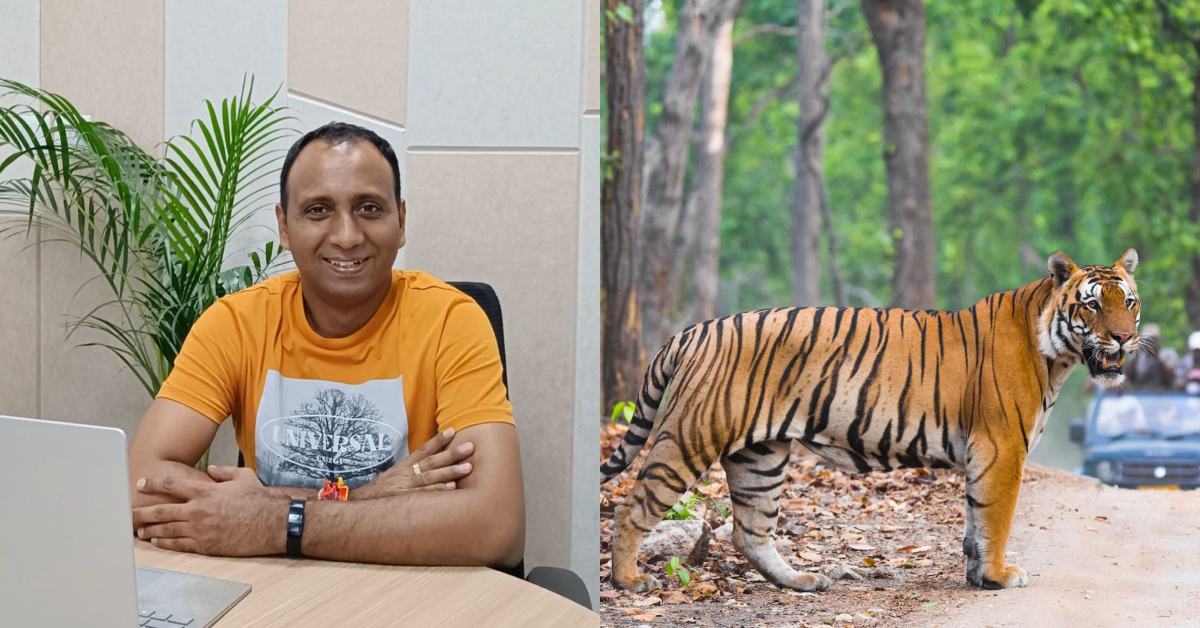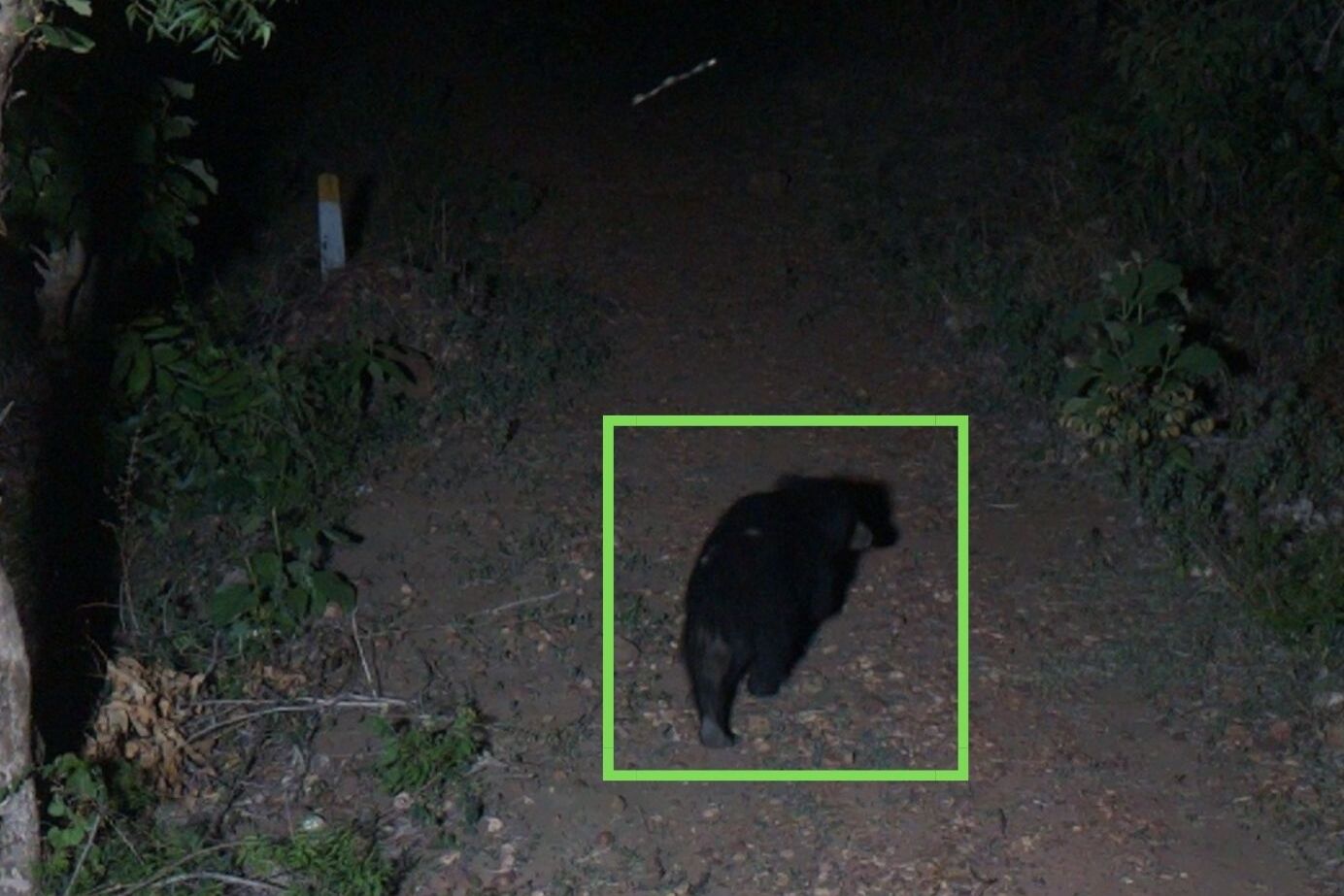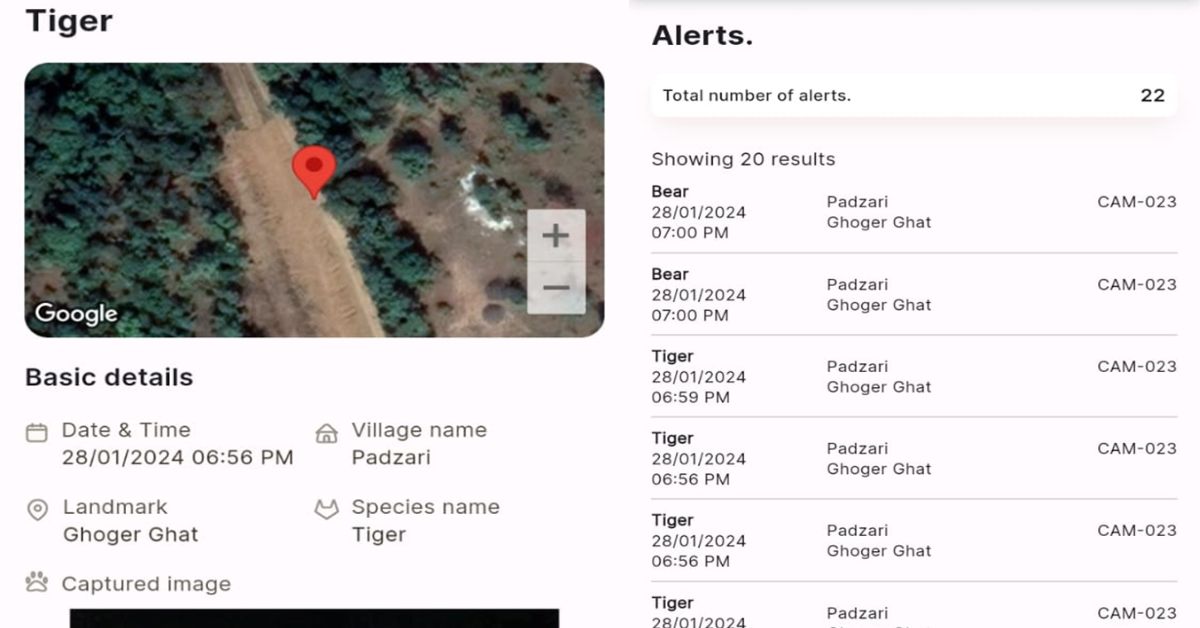‘AI for Bharat’ on World Wildlife Day: AI Innovation Saves Lives By Reducing Human Animal Conflict
Valiance is championing data and AI to find a solution to human-wildlife conflicts that have been plaguing India's villages for decades, especially around tiger reserves. Their 'Wildlife Eye' is a novel innovation that is helping the villagers of Chandrapur in Maharashtra.

This article has been sponsored by Valiance Solutions
Could Artificial Intelligence be channeled to drive wildlife conservation? From healthcare to civil issues and more, AI has benefited every field creating tremendous impact in people’s lives. Isn’t it time then to use AI for social good for all Indians living in the rural parts of the country, which sees major human-animal conflict?
What better time to dive deep into this subject than on World Wildlife Day!
Rapid population growth and infrastructure expansion have led to encroachment into once-safe wildlife habitats, particularly in India, home to 80 percent of the world’s wild tiger population, resulting in significant human-animal conflicts. One such example came up a few years ago when a ‘maneater’ tiger RT-1 — notorious for killing eight persons and 25 cattle — was on the loose in Chandrapur, Maharashtra. Kushagra Pathak, Deputy Director (Buffer) of Tadoba Andhari Tiger Reserve points out that the town has witnessed 225 deaths resulting from altercations between the locals and tigers in the last eight years alone.
A 2022 report also revealed that the year saw the highest number of man-animal conflicts in Maharashtra with the loss of 100 human lives. This paints a worrying picture. Even as the country celebrates the ambitious 1973 Project Tiger, an initiative that has been successful in raising the number of big cats from 1800 in the 1970s to 3167 in 2023, an accompanying rise is seen in cases of human-animal conflict and mauling.
Could technology help solve this issue? The United Nations urges that wildlife and technology do not have to be kept at arm’s length anymore, but they should rather be tied together. With the official theme of World Wildlife Day 2024 being ‘Digital Innovations in Wildlife Conservation’, we are shining the light on a ground-breaking innovation in this space.
Championing AI for social good in Chandrapur and beyond

‘Valiance Solutions’, a Noida-based company, is leading change on this front with the help of their AI-powered solutions focused on social good.
Helmed by Shailendra Singh Kathait, Valiance Solutions is dedicated to using AI to empower businesses. ‘Wildlife Eye’, their innovative platform is testing new waters by trying to mitigate human-animal conflict in over 13 villages of Maharashtra. Their brilliant initiative was also appreciated by Prime Minister Narendra Modi on a recent episode of ‘Mann ki Baat’.
Applauding how digital gadgets are now working to ensure coexistence between humans and animals, the PM cited how this innovation in Chandrapur is an excellent example. “The innovation is protecting people as well as the tigers,” he noted.
To an outsider, the Sitaram Peth village in Bhadrawati, Chandrapur, Maharashtra, would seem picture-perfect. The landscape is dotted with temples, and lakes and rests against the backdrop of the lush greenery of the Tadoba Andhari Tiger Reserve. As one of India’s 47 Project Tiger reserves, the area is a stronghold for the majestic tiger, along with other wildlife such as the leopard, sambar, marsh crocodile and striped hyena.
The village does seem like a beautiful place to be living in. But only an insider would know the other side of the story.
As locals go about their daily routines, a sudden spotting of pugmarks is enough to cause havoc. It is no surprise as to where these prints came from. As the sun sets, its four-legged striped owners can be seen strolling through the village roads, occasionally drinking their fill from the Tadoba Lake. And as their numbers have been increasing — the current count of tigers is 248 according to the Status of Tigers 2022 report — the villagers have been worried.
With some of their family members and cattle being mauled by the tigers, the equation isn’t cordial. Tolerance is beginning to fray.
The solution? ‘Wildlife Eye’
“Tigers, known for their territorial nature, were once commonly observed as solitary creatures occupying a 100 sq km area. However, the rising tiger population, coupled with the diminishing forest cover and a decline in herbivorous prey, has posed challenges for these majestic beasts in their hunting endeavours. This has resulted in an elevated occurrence of tigers venturing into human settlements in search of easier prey,” explains Shailendra Singh Kathait.
In response to the pressing issue, Valiance developed ‘Wildlife Eye’, an AI for Bharat initiative aimed at addressing real-world challenges in rural areas. This patent-pending, innovative, and first-of-its-kind solution utilises a combination of computer vision and artificial intelligence to identify potential animal encroachments and dispatch early alerts to first responders and villagers.
Imagine a smart camera installed on the periphery of villages and human habitats that sends out alerts whenever it senses an approaching beast. That’s exactly how this innovation works.

Through a blend of computer vision and artificial intelligence (AI), potential animal encroachments are identified. The setup’s smart AI cameras, hooters, red lights, LED lights, edge analytics, and power and communication panels facilitate the meticulous tracking and monitoring of individual tigers to such a degree that even specific behavioural shifts are identified.
“This involves situations where tigers start targeting livestock like cows and sheep, unintentionally resulting in direct conflicts with humans. The system can also identify signs such as broken canine teeth, physical injuries, or the onset of ageing – factors that make these animals less effective in hunting in their natural habitat,” shares Kathait. He adds that one noteworthy feature of this innovation is its predictive analytics for the wildlife behaviour of various animals, including tigers, leopards, and bears.

This, he says, helps predict when a tiger might become more prone to conflicts.
Smart cameras transmit images through an IoT platform to a cloud server, where data gets processed. The algorithm identifies species, followed by the unique identification of tigers by using a proprietary algorithm-based deep neural network, enabling real-time tracking in instances of human-tiger conflicts. The alerts are then sent to forest officials through mobile app notifications.
To this end, it permits the officials to take action promptly, while also permitting the village-level public response teams to get alert. Kathait points to the innovation’s feature of detecting jungle violations by humans between 7:00 pm to 6:00 am as its success.
“This system not only alerts but also records and captures those involved, ensuring a vigilant watch over the restricted hours and reinforcing the preservation of the jungle’s integrity,” notes Kathait, adding that the hooters and red lights placed at various strategic locations in human habitats contribute to a comprehensive safety network.
A success story

As India’s first tiger reserve to adopt an AI-based virtual wall system, the Tadoba Andhari Tiger Reserve is seeing huge success.
Where human-wildlife conflicts were once a prevalent concern, Kathait says they have relayed over 650 alerts to officials in the past nine months, effectively averting subsequent attacks. “Till now, no incidents have been reported, testifying to the system’s efficacy,” he notes. He cites an example that highlights the success of the innovation.
“A couple of weeks ago, reports reached us regarding a tiger encroaching upon human habitat at approximately 7 am, significantly heightening the potential for conflict as villagers carried out their daily tasks. At that specific time, the virtual barrier detected the presence of the tiger, calculated a substantial risk of conflict, and promptly issued alerts. This well-timed warning, coupled with the sound of a hooter, effectively diverted the tiger’s attention, prompting it to move away immediately.”

These stories hold personal meaning for Kathait who grew up in Dehradun near a famed tiger reserve. He would often hear heart-wrenching stories of locals being mauled to death. Being able to now be a part of a smart solution is a victory for him. It isn’t just about protecting humans, but also wildlife, he emphasises. As a testament to Valiance’s commitment to using AI for social good, the Wildlife Eye is community-centric in that it prioritises local community benefits.
Elaborating on this, Kathait says, “The value of human life is immeasurable, and assigning a numerical figure to it is beyond consideration. The loss of human lives or livestock in animal attacks not only bears a substantial financial burden on the exchequer running into crores, but it also creates social unrest. Our solution endeavours to avert such incidents, thereby enhancing overall safety and mitigating the economic and emotional toll associated with these unfortunate events.”
Though the model has experienced success, it hasn’t been without its challenges. The lack of a robust network in the villages of Chandrapur posed a hindrance in transmitting images to the algorithm. To overcome this issue, Kathait and his team had to develop a technical breakthrough in the Edge AI algorithm. This innovation now enables the deployed algorithms to operate with reduced consumption.
“Initially, data was transmitted at a rate of 121 GB per day for a single-camera operating 24 hours. To tackle this issue, edge devices were employed to selectively transmit the data only when some object was detected. Now the data transmitted was 2-3 GB per day for each camera,” he notes.
The villagers too are seeing the host of benefits of the virtual wall system. This, too, was a process, Kathait says, adding that acceptance was soon gained through workshops and talks.

“We helped them understand how this technology will save lives and their livestock, which will further improve their livelihoods. To add to this, support from forest officials and the village panchayat also helped and today everyone is a backbone in this,” he elaborates.
As for Kathait, he urges people to judge the performance of the innovation by its numbers. “We judge the success of our system in terms of the lives saved.” If you found our stories insightful, informative, or even just enjoyable, we invite you to consider making a voluntary payment to support the work we do at The Better India. Your contribution helps us continue producing quality content that educates, inspires, and drives positive change. Choose one of the payment options below for your contribution- By paying for the stories you value, you directly contribute to sustaining our efforts focused on making a difference in the world. Together, let’s ensure that impactful stories continue to be told and shared, enriching lives and communities alike. Thank you for your support. Here are some frequently asked questions you might find helpful to know why you are contributing?

Curious to know more about this solution? Read more here.
This story made me
-
97
-
121
-
89
-
167












